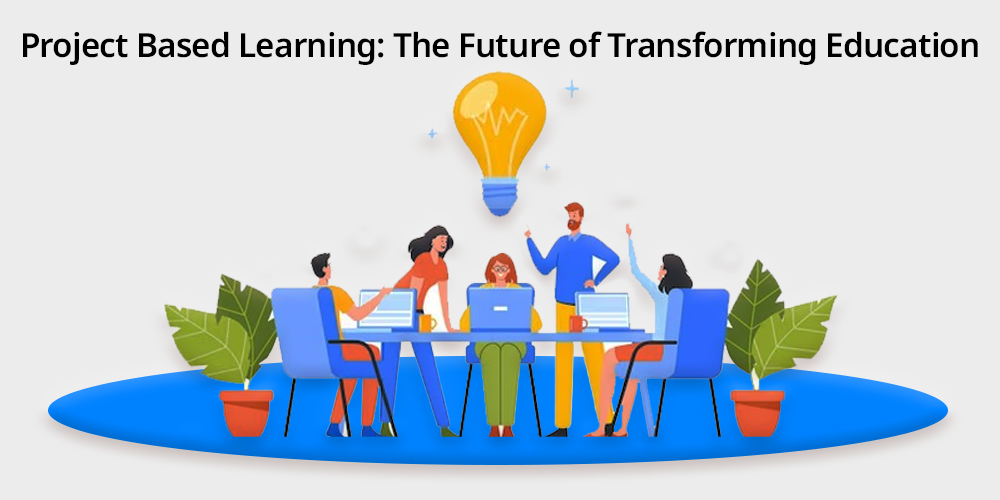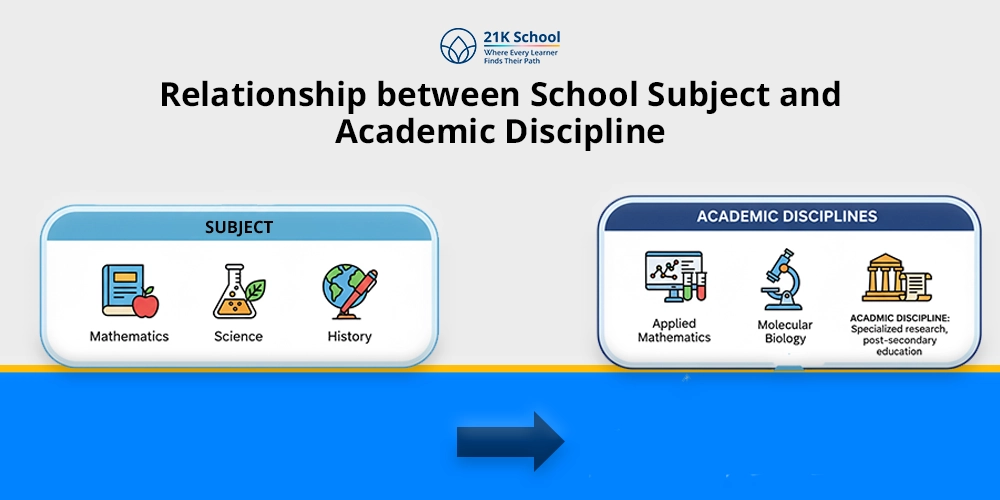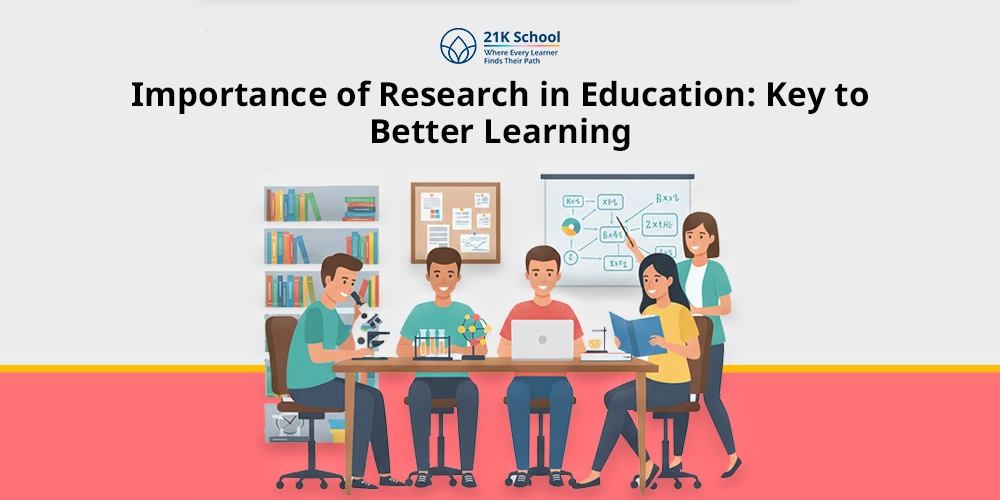
Have you ever wondered about a classroom where students aren’t just memorizing facts for a test, but solving real life problems.
If not this can be possible. Let’s understand how we can make this work?
Here comes the power of project-based learning also known as PBL in short. PBL is not a new trend, it’s a shift in how we think about learning itself.
In this 21st century learning is not limited to reading books, it truly needs skills like: critical thinking, creativity, communication, and collaboration.
Learn some essential skills like how to develop critical thinking skills in students
In this blog we will explore everything about project-based learning and how it is reshaping classrooms, empowering students, and transforming the future of online education
Contents
- What is Project-based Learning?
- Why is Project-based Learning Important?
- 7 Key Components of Project Based Learning
- Core Benefits of Project Based Learning
- Challenges of Project Based Learning and How to Overcome Them
- Steps to Implement Project Based Learning in the Classroom
- Real-World Examples of Project Based Learning
- Project Based Learning For Students With Special Needs
- Project-Based Learning Vs Problem-based Learning: Key Difference
- Project-Based Learning Vs Traditional Learning
- The Future of Education with Project Based Learning
- Conclusion: Engage, Explore, Empower Future Education
What is Project-based Learning?
A teaching method where students gain knowledge and skills by working on complex, real-world problems or challenges over an extended period of time is known as PBL.
The approach helps students in active participation and deeper engagement with the learning material.
The method is ideal because it encourages students to acquire a deeper understanding of subjects through hands-on experiences, research, teamwork, and continuous feedback.
Projects are often interdisciplinary. It allows kids to gain knowledge and information from various subjects and apply it in practical ways.
Let’s understand why it is so important to implement in the future education system. Also read: advantages of Indian education system
Why is Project-based Learning Important?
The importance of project-based learning can be measured by its educational practices with the skills required in the 21st-century workforce.
It fosters deeper understanding, critical thinking, and problem-solving skills by connecting learning to real-world applications and prepares students not only to gain information but also to apply it properly.
Before moving forward learn how to improve problem solving skills in students.
PBL increases curiosity in students, fosters lifelong learning habits, and encourages students to participate in education related activities.
PBL is all about connecting academic content to real-life challenges. This makes learning relevant and engaging for students.
Here’s a more detailed look at why PBL is so important:
1. Deep Understanding and Knowledge Retention
For deep understanding and knowledge retention project based learning is crucial which transforms passive learning into active engagement.
Students can resolve various problems related to learning by applying theoretical knowledge to real-world scenarios.
2. Enhanced Confidence and Independence
PBL enhances students’ independence and increases confidence that allows them to take ownership of their learning.
Here students can explore their interests, make mistakes, and develop valuable activities and skills.
3. Development of 21st Century Skills
PBL is important to the development of 21st century skills by promoting collaboration and encouraging problem-solving.
These skills are ideal for both personal and professional development of students. To improve academic achievement why skill based education is important
7 Key Components of Project Based Learning
Key components of PBL consist of challenging problems or questions, sustained inquiry, student voice and choice, reflection, and authenticity etc.
Let’s elaborate each for better understanding:
1. Challenging Problem or Question
The project should consist of a challenging problem or question that drives the learning process. The problem or question should be engaging.
This leads students to delve into in-depth inquiry and research to find solutions or answers.
2. Sustained Inquiry
PBL is not about short term inquiry; it requires students to optimize time and put real effort into exploring the problem.
Here students are busy with sustained inquiry by researching, asking questions, gathering information, testing hypotheses, and refining their understanding throughout the project duration.
3. Student Voice and Choice
Student voice and choice means the approach offers a voice for decision-making processes and the freedom to make choices about the projects.
Now students can choose project topics, tasks, or even how they present their work in front of everyone. It fosters ownership and engagement.
4. Reflection
Work reflection is a crucial component where students should identify what worked well for a project, what didn’t, and how they can improve.
This approach improves understanding and enhances skill development of students.
Must explore the importance of skill development in school education
5. Authenticity
Authenticity of a project can be measured by its relevance to real world scenarios. Remember it should include a real product or presentation.
However, sharing with an authentic audience instead of teachers is important for the success of learning.
6. Feedback and Revision
Receiving timely and regular feedback on the project progress and being given opportunities to revise and improve the work based on feedback.
Iteration and revision are fundamental, teaching students resilience and a growth mindset.
7. Public Product
In the end, before publicizing the product, students finalize the results through presentation, report, website, etc.
Students can share with others their classroom to show the work to an audience beyond the classroom.
Core Benefits of Project Based Learning
PBL has various benefits that guide students to understand real world problems.
From fostering critical thinking, creativity, and collaboration, while also enhancing student engagement and career growth.
Let’s elaborate!
1. Critical Thinking and Problem-Solving
PBL significantly enhances critical thinking and problem-solving skills in students. It encourages students to examine, interpret, and integrate information from various sources.
The approach helps in promoting deeper understanding and application of knowledge.
2. Creativity and Innovation
Creativity and innovation can encourage students to actively explore, experiment, and solve real-world problems.
The environment is perfect for original thinking, risk-taking, and imaginative exploration.
Are you a parent of online learning children, read why creativity is important to child development
3. Increased Engagement and Motivation
PBL increases engagement and motivation in students by making learning more relevant, hands-on, and student-driven.
It is an ideal for students to explore topics of interest, apply knowledge in real-world contexts.
4. Deep and Meaningful Learning
PBL in the 21st century enhances critical thinking, problem-solving, and collaboration skills, while also fostering creativity and independent learning.
It fosters thorough understanding of concepts through experiential learning.
5. Real-World Application
PBL offers several core benefits such as real-world application of knowledge and concepts.
This will enhance critical thinking, foster collaboration, and promote deeper understanding of subject matter. It connects theoretical knowledge with real-world practice.
6. Lifelong Learning
Lifelong learning in PBL is all about fostering deep understanding, developing essential skills, and promoting engagement.
Students develop various habits such as research, resilience, curiosity, and a sense of responsibility with time.
7. Collaboration and Communication
With PBL students learn to share ideas, debate perspectives, and communicate effectively to achieve common goals.
It is vital for both academic and professional to communicate the ideas, listen to others, and work effectively in groups.
Challenges of Project Based Learning and How to Overcome Them
There are several challenges faced by students while working on new projects. The challenges include student apathy, low productivity, poor quality etc.
However, overcoming these challenges leads to proper strategy, guidance and support that ensures authenticity and relevance.
Some common challenges are:
1. Lack of Direction
Here students most of the time lack direction in the project which leads to delay. Without clear guidelines, students may struggle to understand expectations.
Solution:
Teachers should provide specific and detailed information about the project and how to do it. Providing clear learning goals, assessment rubrics, and milestones for reflection helps correctly.
2. Time Management Difficulties
PBL projects are not only a few hours of work, it needs time and patience. The work spans several weeks, making time management a common challenge.
Solution:
Teachers should provide a proper timeline, set intermediate goals, and teach students planning strategies. They can also help them in between by checking progress.
Or one can also read how can students improve time management skills
3. Critical Thinking Challenges
In initial days students face difficulties in critical thinking and finding attractive and creative ideas to design the project.
Solution:
To resolve this challenge teachers can support them by modeling problem-solving techniques
Also providing questioning strategies, and encouraging a trial-and-error approach.
Steps to Implement Project Based Learning in the Classroom
Implementation of PBL in the classroom is crucial for both teachers and students. It begins by identifying relevant standards, brainstorming authentic projects, and defining the scope.
Later ensure authenticity and relevance to encourage students. Let’s understand in depth:
1. Project Design and Planning
Everything starts with identifying the learning objective and designing a compelling question or problem.
Students first need to make a mind map which includes the scope, timeline, resources, and assessment methods etc. Remember collaborating with others can be a better move.
2. Project Execution
After planning each element of the project the next step is project execution. Teachers can guide students during research, collaboration, and problem-solving activities.
Providing continuous support, timely guidance and proper feedback leads to student engagement on task. This helps in proper completion of projects.
3. Assessment and Evaluation
The next step is assessment and evaluation of the project. With the help of peer evaluations, self-assessments, and teacher observations this can be done easily.
All you need to do is evaluate the performance of the end result to ensure whether changes are required or not.
4. Key Considerations for Implementation
Some essential key considerations for implementation one must look at are:
Project alignment with curriculum standards, access to necessary resources, adapt strategies to meet the needs of the project, and foster classroom culture for support.
Real-World Examples of Project Based Learning
Some commonly real world project ideas used as a PBL are:
- High school students work on researching climate change impacts in different regions. They need to create a digital awareness campaign which includes videos, infographics, and blog posts. Later this will be shared on social media.
- Students create an online team to work on the ideas of a start-up. The project comprises development of a website, business plan, and marketing strategy to represent the idea to the panel of teachers.
- Students can develop a pitch for their business idea, incorporating research, financial projections, and a presentation to a panel of “investors”. This will increase their confidence in front of class.
Each of these ideals are unique and can be executed in both offline and online schooling. Discussion with the teacher while choosing the topic is helpful.
Project Based Learning For Students With Special Needs
PBL is one of the highly beneficial methods for special needs students. It offers a flexible and engaging approach to students’ learning.
To know everything in detail one must read project based learning for students with special needs
Here’s how PBL can play an effective role in students with special needs:
1. Individualized Learning
Individualized learning for students with special needs helps them to engage in the real-world.
Having meaningful projects that cater to their individual strengths and interests make them aware of new things and enables personalized collaborations.
2. Flexibility and Choice
PBL is ideal for students with special needs because it offers flexibility to work according to their own way and choice to work on their interest.
It creates an engaging learning environment, which can lead to improved academic results and the development of essential life skills.
Also read: 10 basic life skills not taught in school
3. Real-World Connections
PBL is a dynamic approach that helps special needs students to collaborate with real-world connections, understand practical experience and deeper knowledge.
Here teachers encourage students’ collaboration, critical thinking, and problem-solving in meaningful contexts.
4. Differentiated Instruction
PBL and differentiated instruction provides a powerful method to support students with special needs.
Differentiated learning tailoring instruction, increased engagement and enhanced self-efficacy of students with disabilities.
5. Transition to Post-School Life
PBL is a valuable approach for supporting students with special needs in their transition to post-school life.
It fosters engagement, collaboration, and real-world application of skills.
Project-Based Learning Vs Problem-based Learning: Key Difference
Both project-based learning and problem-based learning play vital roles in student development. Let’s explore the key differences between these two impactful approaches to learning:
| S No. | Particulars | Project-Based Learning | Problem-based Learning |
| 1. | Focus: | PBL helps in creating a final product in response to a complex question. | Problem-Based Learning mainly focuses on solving a specific problem without necessarily producing a final product. |
| 2. | Scope: | PBL often integrates multiple subjects for students’ development. | Problem-Based Learning may be more narrowly focused on specific content areas. |
| 3. | Real-world Connection: | It connects learning to real-world contexts, but PBL tasks are often more closely tied to real-world contexts. | It connects learning to real-world contexts but does not emphasize tangible outcomes and public presentations like PBL. |
| 4. | Flexibility: | PBL allows for more student choice in project selection and design. | Problem-based learning tends to be more structured around a defined problem. |
| 5. | Example: | Students can research environmental issues, develop informative media such as videos then present their findings. | Students investigate the causes of a math problem and find solutions to get the right answer. This helps them in gaining problem solving skills in a real-world context. |
Project-Based Learning Vs Traditional Learning
Project-Based Learning or PBL is different from traditional learning by focusing on student-led, hands-on projects that connect learning to real-world applications.
Here we are going to explore difference between project-based learning and traditional learning:
| S No. | Particulars | Project-Based Learning | Traditional Learning |
| 1. | Focus: | PBL emphasizes inquiry and application based education. | Traditional learning mainly focuses on memorization and lecture-based instruction education. |
| 2. | Scope: | The scope of PBL integrates cross-disciplinary skills and knowledge in students. | Traditional learning always stays within subject boundaries. |
| 3. | Real-world Connection: | PBL connects directly with real-life challenges and finds solutions. | Traditional learning may lack immediate relevance to everyday life. |
| 4. | Flexibility: | PBL adapts different kinds of student interests and learning styles. | In traditional models, students follow fixed curricula with limited customization. |
| 5. | Collaboration: | PBL emphasizes teamwork and group problem-solving. | Traditional learning mainly focuses on individual work and competition. |
The Future of Education with Project Based Learning
In the 21st century learning is not about memorising; it’s more than traditional education. Project-based learning is an essential component for future education.
It offers a dynamic and engaging approach to learning that aligns with the requirements of a rapidly evolving world.
Reshaping the future of education is what PBL focuses on. It’s time to equip students with adaptive skills and mindsets needed in the information.
If your kid wants to learn modern education, understand why teaching online is future of education
Various schools such as 21K School adopt PBL and nurture more resilient, creative, and capable individuals ready to handle global challenges.
It’s time to choose the right learning approach to ensure a secure future.
Conclusion: Engage, Explore, Empower Future Education
Project-based learning is an ideal to meet the requirements of today’s generation. The approach is more than just a teaching strategy.
It is a transforming shift in how we understand education. And to meet the educational needs of normal and special needs students it is crucial.
By placing students at the core of their learning experiences, PBL empowers them to engage deeply, explore passionately, and emerge as empowered citizens of the world.
As we envision the classroom of tomorrow, embracing PBL is not just an option; it’s a necessity for transforming education and shaping a better future.


